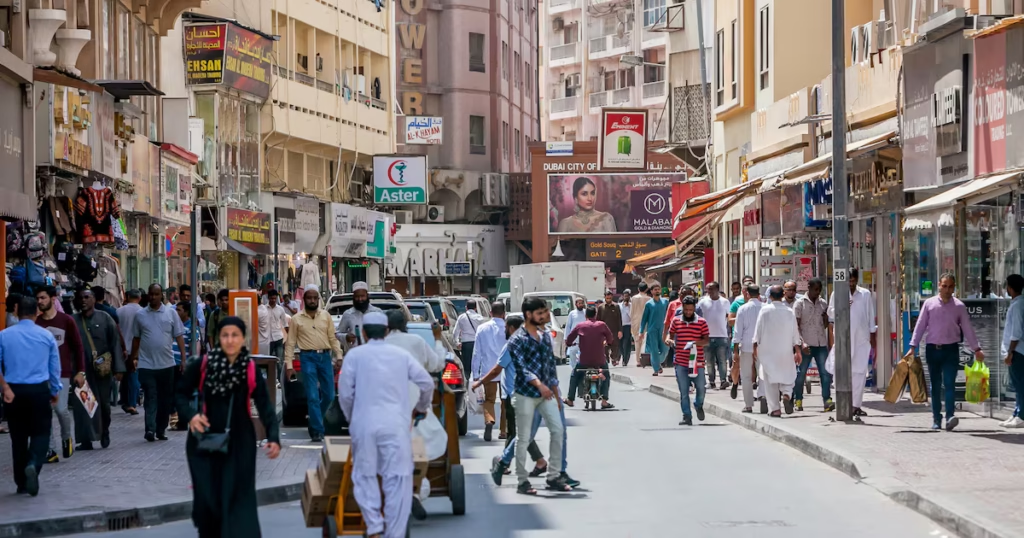Dubai, known for its luxurious lifestyle, iconic skyline, and world-class amenities, is facing a new challenge that is affecting many of its residents: Dubai building overcrowding. While the city attracts people from all over the world, the rapid rise in population and high housing costs have led to a worrying trend of people cramming into residential units beyond their intended capacity.
This issue has not only raised concerns about comfort and privacy but also about safety and legal compliance. Let’s explore why Dubai building overcrowding is increasing, its impact on residents, and what steps are being taken to address this pressing problem.
Why is Dubai building overcrowding happening
The main reason behind Dubai building overcrowding is the rising cost of living, especially rental prices. Dubai is a global hub for business and tourism, and with that comes a high demand for housing.

Many workers, especially those in lower-income jobs, cannot afford to rent individual apartments. Instead, they opt to share flats or villas with several other people to reduce costs. In some cases, a unit designed for a small family ends up housing more than ten individuals.
A few key reasons include

- High rental prices. Even though Dubai offers a variety of housing options, rents in prime locations remain high.
- Influx of workers. The continuous demand for labor, especially in service, hospitality, and construction sectors, attracts many expatriates.
- Limited affordable housing. Although there are projects focusing on affordable housing, supply is still limited compared to demand.
- Lack of awareness or enforcement. Some landlords and tenants ignore regulations and overcrowd buildings to maximize profits or save costs.
How is Dubai building overcrowding affecting residents
The effects of Dubai building overcrowding are far-reaching.
Impact on health and well-being
Living in an overcrowded space can seriously impact both physical and mental health. With too many people sharing small rooms, ventilation becomes poor, hygiene standards drop, and the risk of infectious diseases increases.
Moreover, lack of personal space can lead to stress, anxiety, and even depression. Many residents find it hard to rest or focus due to constant noise and disturbances.
Safety hazards

Overcrowded buildings often violate safety codes. Exits may be blocked, and in emergencies like fires, quick evacuation becomes impossible. Extra partitions and illegal modifications can also create fire hazards.
Tragic incidents in the past have shown how dangerous such living conditions can be.
Strain on infrastructure
Buildings are designed to accommodate a certain number of people. When this limit is exceeded, it strains water supply, sewage systems, and electricity networks.
As a result, breakdowns and maintenance issues become frequent, affecting the quality of life for everyone in the building.
Community impact
Overcrowding affects not just individual residents but entire neighborhoods. Parking problems, increased waste, and noise complaints disrupt community harmony.
In the long run, these issues can lower the attractiveness of certain residential areas.
The legal side: What do the rules say
Dubai has strict rules against building overcrowding. Authorities define maximum occupancy standards to ensure safety and health standards are maintained.
According to Dubai Municipality, it is illegal to house more people than the designated capacity of a residential unit. Violators can face heavy fines, legal action, and in some cases, eviction.
Regular inspections are carried out, and surprise checks are conducted to catch violations. However, despite these measures, some landlords and tenants continue to break the rules, usually driven by financial pressures.
Recent enforcement actions
In recent years, Dubai Municipality has intensified its efforts to curb overcrowding.
- Increased inspections. Teams conduct surprise visits to residential buildings to check for illegal partitions and excessive occupancy.
- Fines and penalties. Landlords caught allowing overcrowding face fines of up to AED 100,000.
- Awareness campaigns. Authorities also run campaigns to educate tenants and landlords about the dangers of overcrowding and legal consequences.
While these actions have helped reduce some cases, overcrowding remains an ongoing issue due to continuous demand for low-cost housing.
Stories from residents: Life in an overcrowded building
To truly understand the impact of Dubai building overcrowding, it is important to listen to those who live in such conditions.
Ali, a restaurant worker from South Asia, shares his experience
“I share a two-bedroom apartment with 12 others. We take turns using the kitchen and bathroom. It is not ideal, but rent is too high. I send most of my money back home, so this is the only way.”
Maya, a Filipina working as a receptionist, says
“Sometimes I feel very stressed. There is no privacy, and it is noisy all the time. I miss having my own space, but I cannot afford it on my salary.”
These stories highlight the difficult choices many workers have to make to support their families while living in Dubai.
Possible solutions to Dubai building overcrowding
Addressing Dubai building overcrowding requires a combined effort from authorities, landlords, and the wider community. Here are some potential solutions
Increasing affordable housing projects
One of the most effective ways is to create more affordable housing units. By providing reasonably priced options for low- and middle-income workers, the pressure to overcrowd existing spaces can be reduced.
Several developers are already working on budget-friendly housing projects in areas like Dubai South and International City.
Stricter enforcement and monitoring
While inspections are already happening, increasing their frequency and using modern technologies like AI and surveillance systems can help identify violators faster.
Educating residents and landlords

Many tenants may not be fully aware of the dangers of overcrowding. Awareness campaigns, community workshops, and multilingual information materials can help spread the message.
Landlords should also be reminded of their responsibilities and the legal risks they face if found guilty of allowing overcrowding.
Better support for low-income workers
Providing rental subsidies or other financial support to low-income workers could help them afford better housing without resorting to overcrowded living arrangements.
Community involvement
Residents can play a role by reporting suspected overcrowding to authorities. Many residents are hesitant to report due to fear of retaliation, but confidential reporting channels can help overcome this barrier.
Future outlook: Can Dubai solve this challenge
Dubai has always shown a remarkable ability to solve urban challenges with innovation and strong governance. From traffic management to environmental sustainability, the city has set global benchmarks.
Solving Dubai building overcrowding will require a similar level of commitment and creativity.
With a fast-growing population and its status as a global business hub, Dubai cannot afford to let overcrowding escalate further. By improving housing affordability, enforcing laws strictly, and raising community awareness, the city can ensure a better living environment for all its residents.
Final thoughts
Dubai is a city of dreams for millions. However, for many workers and residents struggling with overcrowded living conditions, life can be far from glamorous.
Dubai building overcrowding is more than just a housing issue. It is a public health, safety, and community well-being challenge.
As authorities step up enforcement and developers focus on affordable housing, there is hope that this issue will be gradually resolved.
By working together, government, landlords, tenants, and the community can ensure Dubai continues to be a shining example of a modern, inclusive, and safe global city.
Follow us on instagram: UAE STORIES
Read More: UAE Becomes World’s Third-Largest Holder of Sovereign Wealth and Public Pension Assets














